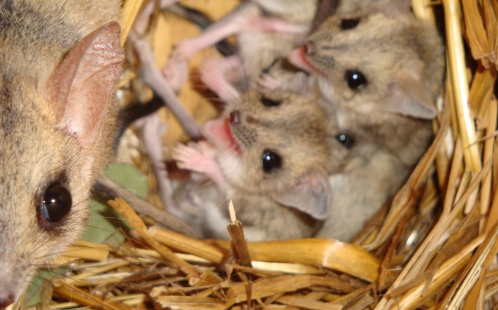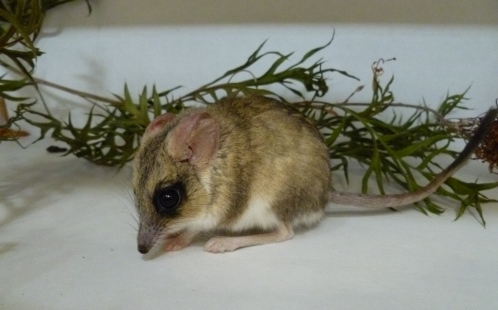UWS's own cover star
A small, nocturnal native marsupial that resides on Hawkesbury campus has become a cover model, featuring on the front of the international journal Zoo Biology, a publication that looks at all aspects of husbandry and maintenance of wild animals in wildlife parks, zoos and aquariums. The kultarr is small, carnivorous and nocturnal, and looks a bit like a mouse. UWS is one of only two institutions worldwide that house the kultarr.
Here at UWS, kultarrs are kept for research, and for educating and training students. Along with three other native mammal species, the kultarrs are homed in the Small Native Mammal Teaching and Research Facility on the Hawkesbury campus.
Usually found in the arid and semi-arid regions of central Australia, kultarr numbers are quite low. In fact, the kultarr is considered endangered in NSW.
UWS researchers Dr Hayley Stannard and Dr Julie Old from the School of Science and Health have been studying kultarrs, increasing the knowledge of the biology and captive management of these animals. Their studies have provided data on reproduction, diet choice, nutrition, health and disease.
"I have a passion for wildlife conservation," says Hayley. "There are many processes in Australia – farming, land degradation, exotic predators and human conflict – that are still causing species' decline. I believe it is important to conserve animals for normal ecosystem function, as well as for future generations."
The recent cover model for Zoo Biology is a three-and-a-half-year-old male kultarr named Matari (aboriginal for "a man") who was born at UWS.
Hayley and Julie have had successfully bred and cared for captive kultarrs over the past seven years. They compiled all the known data on the kultarr and combined it with their own personal knowledge and experience in maintaining this species at UWS to publish a paper in Zoo Biology: Biology, life history, and captive management of the kultarr (Antechinomys laniger).
"Kultarrs are very easy to work with compared to some other marsupial species and very cooperative," says Hayley. "When I run an experiment they always participate willingly, such as eating new foods."
Some interesting kultarr traits include being able reduce their body temperature to 11 degrees Celsius, their pouch can hold up to six babies, and they are only pregnant for 12 to 17 days.
If you're interested in finding out more about the kultarr, Hayley and Julie's published paper can be found online (opens in a new window).
Mobile options:



